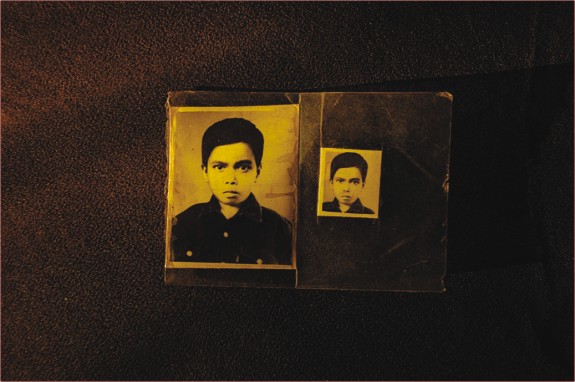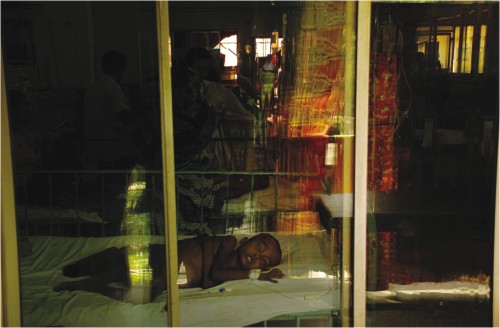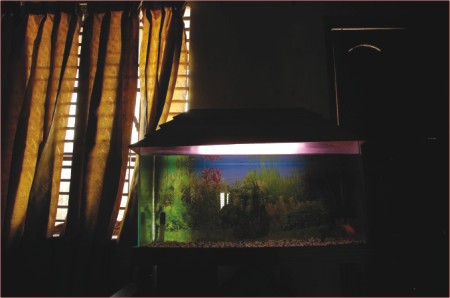
Inside
|
Photo Feature
A photo feature by Noor Alam "When I brought Shabjal to Dhaka from Manikganj for his treatment, he did not want to let go of my hand because he was afraid of getting lost. My sweetheart is lost forever… Now wherever I go I carry this picture, I feel he is with me.” Like Shahida Begum many mothers live with the memories of their lost children and thousands of parents fight every moment to survive the ordeal of witnessing their children suffering from Thalassaemia. "Ballads of the Agonized Souls" is a combination of some portraits and still life images. The still life images contain the memories of the lost souls and the portraits represent the struggling living souls who are on the edge of a cruel death. About ThalassaemiaThalassaemia is an inherited blood disorder in which the body is unable to make adequate hemoglobin (Hb). Hemoglobin is present in the red cells. Normally red cells survive for 120 days. But red cells affected by Thalassaemia survive less than that. When both parents are Thalassaemia carriers their children may inherit the disease. A person born with Thalassaemia suffers from chronic anemia. As a result their growth is stunted and without proper treatment they usually die by the age of five. Over 250 million persons are affected with Thalassemia and allied disorders in the world. Over 1,00,000 Thalassemia Major are born annually all over the world. According to a World Health Organization (WHO) publication about 7-8% of the population of Bangladesh are carriers of Thalassaemia and other blood related genetic disorders like HbE disease which means roughly 11.2 million Bangladeshis are Thalassaemia carriers and 7,483 children are born with the disease every year with expected 3,74,154 living patients.
“The rest of my two children are quite okay, only Shad is sick. Thalassemia was detected when he was only a four-month-old baby. None among our relatives has this disease. At first, I couldn't bear to deal with his ailment, but now I am much stronger. I am doing a battle round the clock to keep him well. ”
“Nipu's elder sister Diba was like his friend. Nipu passed away after three years of Diba's death. Before Diba's death, he was quite normal … used to go out, passed time playing. But he changed afterwards, always remained melancholic and always seemed to have something on his mind .”
“Emon has a swelled belly, the doctor said if he has the spleen operation, he could get well. The operation will take 20,000 taka. Emon's father has died, how is it possible for me to collect the money?”
“Shojib has been suffering fever with dysentery for many days. At first, we relied on homoeopathy treatment, but his condition was deteriorating. Then we had to rush him to the local hospital. The doctor suggested taking him to Dhaka. Here they say he was affected by a disease named Thalassemia and needs an operation immediately. Twenty bags of blood is required. But I managed to have only four bags. From where will I get the rest?”
"Shamol bhaiya used to stay home most of the time. He felt uncomfortable to go outside. The fishes in the aquarium seemed to be his close friends, whom he passed his whole days."
The only permanent cure for Thalassaemia is bone marrow transplantation which is a very expensive treatment and not available in Bangladesh. The best treatment available today consists of frequent blood transfusions (every two to three weeks) with Iron Chelation therapy. The best possible way to survive this deadly disease is prevention. Every potential parent should take blood hb-electrophoresis/carrier detection examination. If a person is a carrier, he or she should be careful when thinking about taking children so a child does not inherit this deadly disease from his/her parents.
“Sometimes I get very angry when I see the patients affected by this disease increasing very rapidly through the country. But the government and the media is paying no attention. They are only giving speeches and participating in seminars on Thalassemia Day and forgetting about it the next day.”
“The doctor said he needs 2 bags of blood with 20 desferal injections each month. One bag of blood costs about 500 taka and is also rare to find. The desferal costs 250 taka. Moreover the journey from Chadpur to Dhaka costs a lot of money. We are poor farmers, how will we get the money?”
We feel very sad when we see our child Shanto is suffering because of us. We have no problem, but he has to suffer his whole life. We pray that no other parents make this mistake.
"My sister used to take music lessons and I took Tabla Lessons.We used to practice together every morning. Now the instruments are filled with filth and dust.” |










